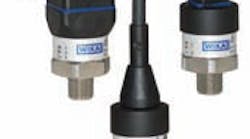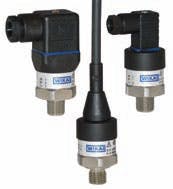WIKA Tronic A-10 pressure transmitter is resistant to vibration, shock, wide temperature variations, RFI, and other extreme environmental conditions. It is suited for applications where negative pressures are measured. It operates in pressure ranges from 0 to15 psi to 0 to 10,000 psi. Signal output is 4-20 mA, 0-10 V, or 0-5 V. Electrical connections include DIN 175301-803 A and C, M12x1, and 6 ft cable. Pressure connection is via 14 NPT, 12 NPT, SAE #4, or others.
WIKA Instrument Corp., (888) 945-2872, www.wika.com

Continue Reading
Continue Reading
BOOK 2, CHAPTER 12: Fluid Motor Circuits
March 18, 2009
Motor leakage variations
Oct. 18, 2006
Sponsored Recommendations
Sponsored Recommendations
How Variable Volume Pumps Work
Feb. 6, 2024
What is a Check Valve and How Does it Work?
Feb. 6, 2024
Sponsored
Sponsored

